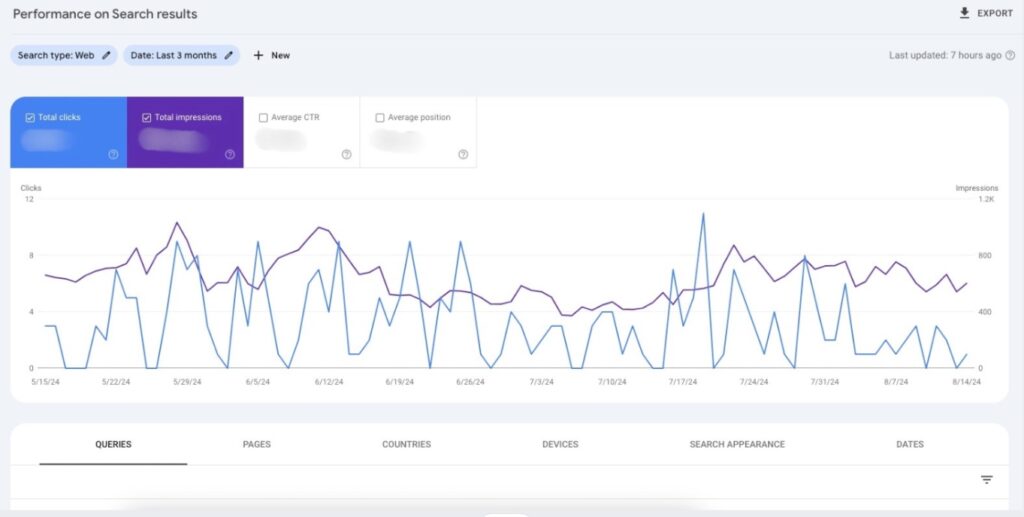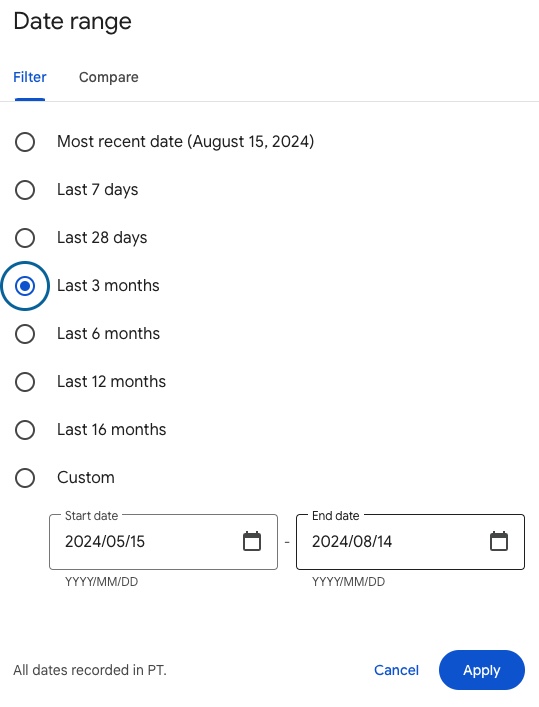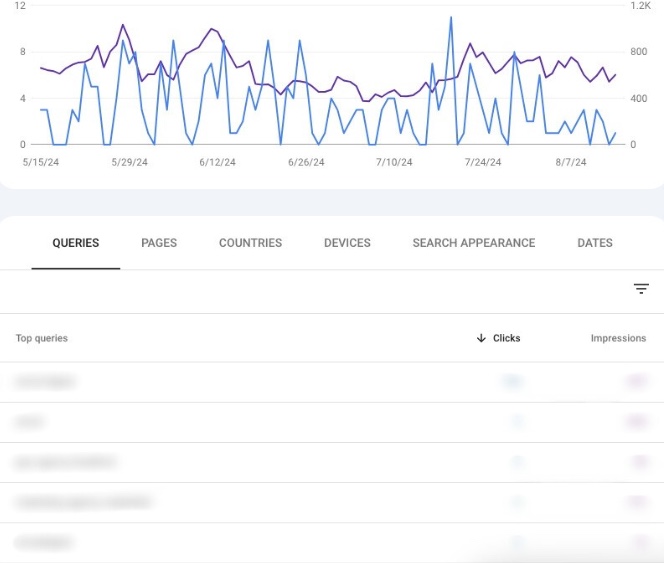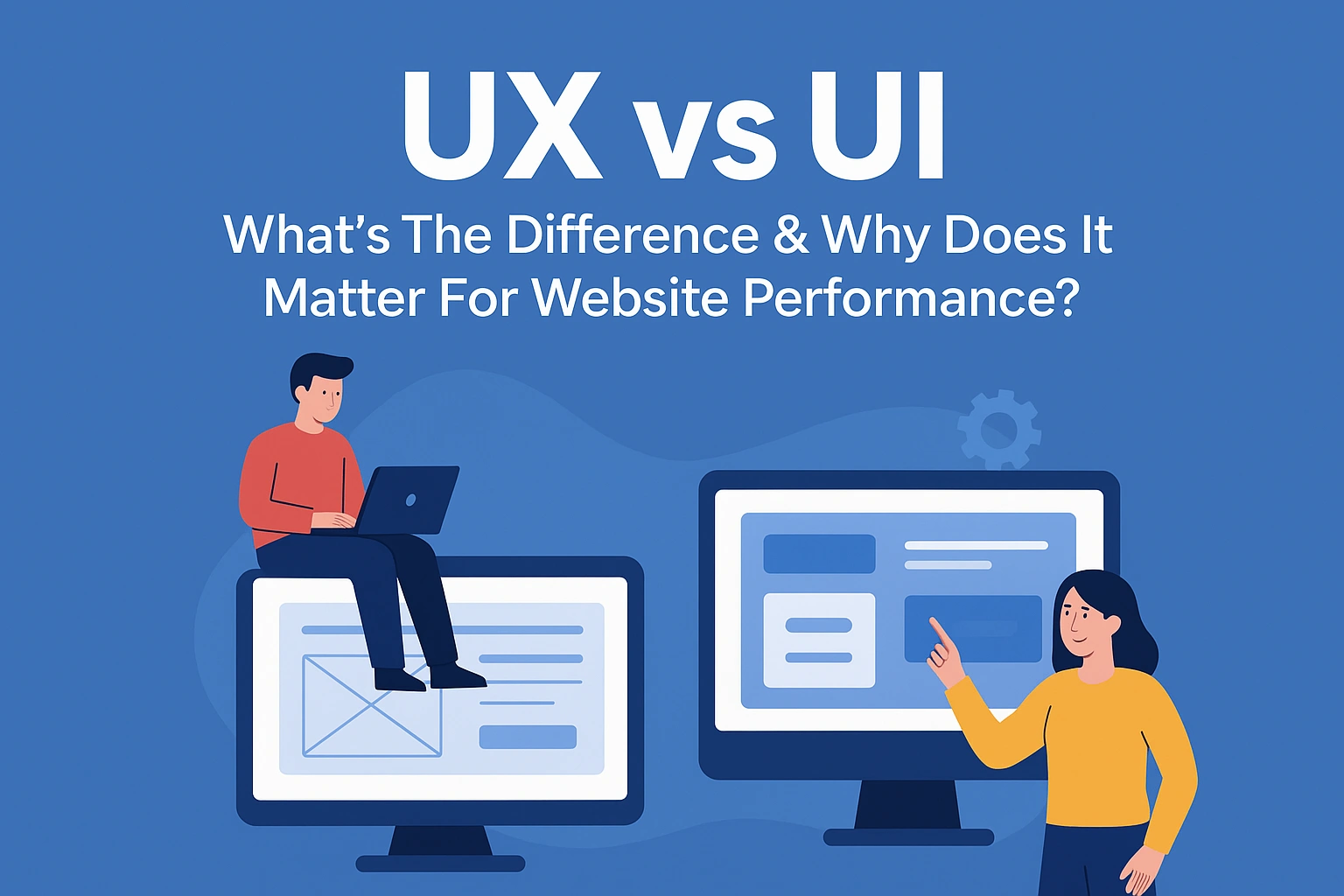On August 15th, 2024, Google announced its latest core update, continuing the trend of refining and enhancing search results to better meet the needs of users around the world. This new update, which follows closely behind the March 2024 Core Update, has brought about its own set of adjustments and improvements to the way content is evaluated.
As we look to understand the real impact of this recent change, it’s important to recognise that Google’s ongoing updates are part of its continuous effort to refine the search experience, ensuring that quality content is more accessible and discoverable. For businesses online, staying informed about these developments is key to maintaining visibility in an ever-evolving digital landscape.
What Are Google Saying?
On Thursday, Google’s CEO, John Mueller, shared some valuable insights into the philosophy and goals behind the August 2024 Core Update. He emphasised that this update is part of Google’s ongoing commitment to refining the quality of its search results, aiming to ensure that the content people encounter is genuinely useful and not just optimised to rank well. Mueller highlighted the importance of providing users with information that truly meets their needs, which means that content created solely for the sake of search engine performance will be given less priority, whilst content that offers real value will be more prominently featured.
In his announcement, Mueller also acknowledged that this update reflects feedback received from creators and others within the digital community over the past few months. Google has listened to those who have voiced their thoughts on the search experience, with this in mind, the update places a stronger focus on surfacing high-quality, original content from across the web. By aiming to present users with the most relevant, helpful and informative information, Google ensures that even smaller, yet highly relevant sites, have the opportunity to be seen and appreciated by a broader audience. This provides website and business owners with a real opportunity!
Moreover, Mueller pointed out that the August update is designed to better recognise and reward improvements made by websites since previous updates went live. This is a critical point for content creators and site owners who have been working hard to enhance the quality of their sites, highlighting that Google’s algorithms are always on the lookout for positive changes and will look to reward website owners who provide users with helpful information around their niche.

How Do Core Updates Work?
Core updates, at their essence, are substantial changes that Google makes to its search algorithms. They can often result in noticeable shifts in the search engine rankings and website owners can often either benefit greatly or suffer big losses when it comes to the various search terms their site ranks for.
To understand how core updates work, it is important to recognise that Google’s algorithms are very complex systems that evaluate a number of different factors which determine how content should be ranked. This includes everything from the relevance of the content and the keywords in a search query, to the overall authority of a website and the user experience provided by a page.
What makes core updates particularly impactful is that they are not targeted at specific sites, industries, or types of content. Instead, they are broad in scope, meaning that any website, regardless of its niche, can experience changes in its rankings, whether positive or negative. These changes are a natural outcome of Google striving to align its search results more closely with the ever-evolving needs and expectations of its users.
It’s also important to understand that core updates are not corrections or penalties for websites that see a drop in rankings; rather, they are a re-evaluation based on the latest improvements to Google’s understanding of what constitutes high-quality content. In some cases, websites that experience a drop may not have done anything wrong but may simply be outperformed by others that better meet the criteria emphasised by the new update. On the flip side, websites that have been consistently producing high-quality content that aligns with Google’s evolving standards may see a boost in visibility and traffic.
The process of rolling out a core update typically takes several days, during which time fluctuations in search rankings are common as the new criteria take effect. This period can be unsettling for website owners, but it is a necessary part of the process as the search ecosystem adjusts to the changes. Once the rollout is complete, the search landscape stabilises, offering a clearer picture of how the update has influenced rankings across the web.
How Can A Core Update Affect Your Site?
A core update can have a significant impact on your site, and understanding how these changes might manifest is key to adapting successfully. Since core updates involve broad changes to Google’s search algorithms, they can influence your site’s search rankings, visibility, and ultimately, the amount of organic traffic you receive.
A core update can affect your site in much the same way that a “Top 20 Movies of All Time” list might change over the years. Imagine you made that list five years ago in 2019, and it included classics like The Godfather, Star Wars, and Pulp Fiction. At that time, these were considered in your top 20 of the best movies ever made. But now, in 2024, a lot has happened in the film world—new blockbusters have been released, different genres have grown in popularity, and audience expectations have shifted. Films like Oppenheimer or Parasite might now find a spot on the list, and some older films might move down or fall off entirely to make room for these newer entries.
Google’s core updates work in a similar way. When Google releases a core update, it’s like they’re revising their “Top 20 Websites” list, but on a much larger scale, with millions of sites in the mix. What made your site rank well in the past might not hold the same weight anymore because the landscape has changed. Just like how new movies shake up a “Top 20” list, new content and better websites are constantly emerging, and Google adjusts its rankings to reflect that.
For example, if your site was doing well because it had a lot of content that used to be popular or was highly optimised for certain search terms, a core update might cause your rankings to drop if there are now better, fresher, or more relevant sites that meet the new criteria Google is emphasising. It’s not that your site suddenly became bad—it’s just that the “best of all time” in the eyes of Google has evolved.
A core update might shake things up, but it also provides an opportunity to improve and make sure your site remains a contender in the ever-changing search landscape.
Ultimately, the impact of a core update is a reflection of how well your site meets the evolving criteria that Google’s algorithms are designed to evaluate. Whilst it’s natural to feel concerned if you notice changes in your rankings, it’s important to approach these shifts as opportunities to refine your content strategy, focusing on delivering the highest possible value to your audience.

How To Check If There Has Been A Traffic Drop In Search Console?
To check if there has been a traffic drop in Google Search Console, the first step is to log in to your Google Search Console account, where you’ll be able to access a wealth of data that Google provides about how your site is performing in search results. Once logged in, you should navigate to the “Performance” report, which is one of the key tools available for monitoring traffic and identifying any changes that may have occurred.
In the Performance report, you’ll see an overview of your site’s metrics, including total clicks, total impressions, average click-through rate (CTR), and average position in search results. These metrics are displayed over a specified period, and by adjusting the date range, you can compare your site’s performance before and after a core update to see if there has been a noticeable shift in traffic. If there is a drop in the number of clicks or impressions, it might indicate that your site’s rankings have been affected by the update, leading to less visibility and fewer visits.

One of the most useful features within the Performance report is the ability to compare different date ranges. By selecting the “Compare” option, you can directly compare metrics from the period before the update to the period after it. This comparison can highlight any trends, whether it’s a decline in clicks or a shift in the average position of your site’s pages in the search results, making it easier to understand the impact of the update on your site’s performance.

Another approach within Google Search Console is to drill down into specific queries or pages. By selecting the “Queries” tab, you can see which search terms are driving traffic to your site and whether there have been changes in their performance when it comes to clicks or impressions.

Similarly, the “Pages” tab allows you to monitor the performance of individual pages, helping you identify if certain pages have experienced a drop in traffic or rankings. Again, if you notice that certain pages or queries that were previously performing well have seen a decrease, this could indicate that the update has affected your site’s visibility for those specific terms or content.
It’s also important to look at the overall trend in impressions, which reflects how often your site appears in search results. A decline in impressions may suggest that your site is being shown less frequently, which can naturally lead to fewer clicks and lower traffic. By keeping an eye on these trends over time, you can get a clearer picture of how your site’s visibility is evolving and whether there’s a need to take action to address any declines.
By regularly reviewing your performance data, comparing key metrics, and analysing the performance of specific queries and pages, you can stay informed about your site’s status and take steps to maintain or improve your search rankings in the wake of any changes brought about by a Google core update.
What Can I Do If I Notice A Large Drop?
When you notice a significant drop in your website’s search rankings following a Google Core Update, it can be quite unsettling, especially if you have been consistently working on your site’s SEO and content strategy. However, it’s important to approach this situation with a calm and clear mindset. Understanding that such fluctuations can be normal can help you to manage the situation as effectively as possible. The first step you should take is to thoroughly examine the data available on Google Search Console.
This tool is invaluable as it allows you to identify specific areas where your site’s performance may have changed. By carefully comparing metrics such as total clicks, impressions, and average position before and after the update, you can gain valuable insights into how your site’s visibility has been affected. If you notice that certain pages or search queries have experienced a drop in performance, this could indicate that the update has impacted your site’s rankings for those particular terms or types of content.
Once you have identified the areas that have been affected, it’s important to reassess your content strategy. Focus on the quality, relevance, and value of the information you are providing. Google’s updates increasingly emphasise content that truly meets user needs, rather than content that is simply optimised for search engines. As a result, you should prioritise enhancing the depth, originality, and usefulness of your content, ensuring that it addresses the specific questions and interests of your target audience. This might involve updating existing content to reflect current trends or best practices, or it could mean creating new content that better aligns with the latest criteria Google is emphasising.
In addition to content, consider the broader user experience on your site. This includes important factors such as page load speed, mobile friendliness, and ease of navigation. Google’s algorithms consider a variety of factors when determining search rankings, including the relevance of content to the user’s query, the quality and depth of the content, and the number and quality of inbound links from reputable websites. Therefore, providing a seamless and engaging experience for visitors is incredibly important in positively influencing how your site is perceived by Google.
Your website should be easy to navigate, visually appealing, and filled with relevant, interesting information. The more you engage users and the longer they stick around, the more likely you are to establish trust and brand awareness. This, in turn, can lead to better search rankings as Google recognises the value your site provides to its users.
Additionally, consider the importance of building a link-worthy site. A webpage that is content-rich, authoritative, unbiased, and helps visitors learn more about what they are interested in is most likely to attract links from other websites, which improves your search engine optimisation.
Finally, remember that this is a long-term strategy. It takes time to see results, and it requires consistent effort and attention. Using tools such as Google Search Console, Ahrefs or Semrush can really help you stay on top of your search rankings in the future. However, by using a marketing agency like us, you can utilise our deep wealth of knowledge and experience in using such tools. Our team brings the expertise needed to elevate your SEO strategy, ensuring your website isn’t just good, but exceptional. We can help you unlock its full potential and achieve the results you’re aiming for.
Things To Keep In Mind When Making Changes
When making changes to your website, there are several key factors to remember to ensure changes are effective and beneficial in the long term. The temptation to make quick fixes, such as removing elements from your page, or deleting whole pages, because of concerns about SEO, might seem the best thing to do at the time. However, this approach often overlooks the broader picture, as well as often being detrimental to the health of your site. Instead of opting for hasty adjustments, it’s far more valuable to focus on changes that improve the user experience and contribute to the long-term success of your site.
One of the most important aspects to consider is how to enhance your content in meaningful ways. As mentioned earlier, think about ways to make your content more engaging and easier to understand. This might involve rewriting or restructuring it so that it flows better and is more accessible to readers. The goal should be to create content that is not only informative but also enjoyable to read and navigate.
When making changes, it’s essential to adopt a user-centric mindset. This means prioritising the needs and preferences of your audience over purely technical or superficial adjustments. Understanding what your users are looking for and how they interact with your site can guide your decisions and help you make changes that resonate with them. For example, if you notice that users are having difficulty finding certain information or that certain content is not engaging them as intended, these insights can inform your content strategy and lead to more effective improvements.
By focusing on changes that have a lasting positive impact, you set your site up for continued success. Regularly reviewing and updating your content to keep it fresh and relevant is an ongoing process that contributes to maintaining a high-quality user experience.
In summary, when making changes to your website, prioritise user experience and long-term sustainability over quick fixes. Aim to improve your content in meaningful ways, such as through better organisation and clarity, and approach content deletion thoughtfully, only as a last resort.

How Long Should I Wait To See Results?
Generally, the timeline for noticing improvements in search rankings can range from a few months to a year, depending on a range of important to know factors that influence the process.
One of the primary reasons SEO takes time to show results is the nature of how search engines like Google operate. These platforms use complex algorithms to evaluate websites based on numerous criteria, including content quality, relevance, and authority. After implementing changes on a website, it can take several weeks or even months for search engines to crawl, index, and assess these updates before reflecting them in search rankings. This delay is partly due to the time it takes for search engines to process new information and determine its relevance to users’ search queries.
The age and authority of a website play a significant role in the speed at which SEO results become apparent. Established websites with a history of quality content and a strong backlink profile are more likely to see quicker improvements compared to newer sites. This is because search engines tend to trust older domains that have consistently provided valuable information to users. On the other hand, new websites need to build authority from scratch, which involves creating high-quality content, earning backlinks, and demonstrating reliability over time.
Another critical factor influencing the timeline for SEO results is the level of competition in the industry or niche. In highly competitive markets, achieving top rankings can be more challenging and time-consuming, as many businesses vie for the same keywords and audience attention. Conversely, targeting less competitive, niche-specific keywords can lead to faster results, as there is less competition and a greater opportunity to capture a specific audience.
Whilst the journey to improved search rankings can be lengthy, the benefits of a well-executed SEO strategy are substantial. Increased organic traffic, higher conversion rates, and enhanced online visibility are among the rewards of a successful SEO campaign. Business owners should embrace a long-term perspective, understanding that SEO is a gradual process that demands patience, persistence, and a commitment to delivering value to users.
In conclusion, the timeline for seeing an effect in search results after implementing SEO changes can vary widely. Whilst some businesses may notice improvements within a few months, others may need to wait up to a year to see significant changes. By setting realistic expectations and focusing on creating high-quality content that meets users’ needs, businesses can achieve sustainable growth in search rankings over time.
How Can Simul Digital Help?
The world of search engine optimisation (SEO) can be confusing, with constant changes in algorithms, complex technical requirements, and the challenge of creating content that not only attracts attention but also ranks well. That’s where we come in—we take the guesswork out of SEO, offering a clear and focused approach to improving your online visibility whilst you concentrate on growing your business. We will break down the complexities of SEO into manageable steps, guiding you through the process without overwhelming you with technical jargon.
But it doesn’t stop at SEO. We understand that a successful online presence requires more than just ranking well in search results. That’s why we offer a full suite of digital marketing services that work together to enhance your search performance. By working with us, you can be confident that your site is in good hands, and that you’re on the right path to reaching the front page of Google and connecting with your target audience more effectively.




